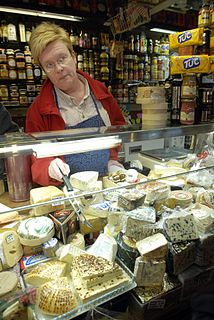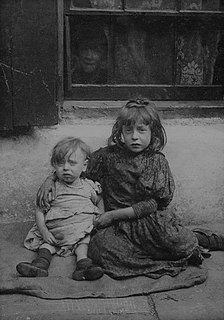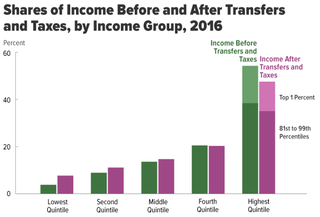Related Research Articles

A consumer is a person or a group who intends to order, orders, or uses purchased goods, products, or services primarily for personal, social, family, household and similar needs, not directly related to entrepreneurial or business activities.
Marketing refers to activities a company undertakes to promote the buying or selling of a product, service, or good.

Retail is the process of selling consumer goods or services to customers through multiple channels of distribution to earn a profit. Retailers satisfy demand identified through a supply chain. The term "retailer" is typically applied where a service provider fills the small orders of many individuals, who are end-users, rather than large orders of a small number of wholesale, corporate or government clientele. Shopping generally refers to the act of buying products. Sometimes this is done to obtain final goods, including necessities such as food and clothing; sometimes it takes place as a recreational activity. Recreational shopping often involves window shopping and browsing: it does not always result in a purchase.
In marketing, market segmentation is the process of dividing a broad consumer or business market, normally consisting of existing and potential customers, into sub-groups of consumers based on some type of shared characteristics.

Nielsen Holdings PLC is an American, UK-domiciled, information, data and market measurement firm. Nielsen operates in over 100 countries and employs approximately 44,000 people worldwide.
A final goods or consumer goods is a commodity that is used by the consumer to satisfy current wants or needs, unlike intermediate goods which is utilized to produce another goods. A microwave oven or a bicycle is a final good, whereas the parts purchased to manufacture it are intermediate goods.

Child poverty refers to the state of children living in poverty and applies to children from poor families or orphans being raised with limited or—in some cases—absent state resources. Children that fail to meet the minimum acceptable standard of the nation where that child lives are said to be poor. In developing countries, these standards are low and, when combined with the increased number of orphans, the effects are more extreme.
The NRS social grades are a system of demographic classification used in the United Kingdom. They were originally developed by the National Readership Survey (NRS) to classify readers, but are now used by many other organisations for wider applications and have become a standard for market research. They were developed over 50 years ago and achieved widespread usage in 20th century Britain. Their definition is now maintained by the Market Research Society.

Affordable housing is housing which is deemed affordable to those with a median household income or below as rated by the national government or a local government by a recognized housing affordability index. Most of the literature on affordable housing refers to mortgages and number of forms that exist along a continuum – from emergency shelters, to transitional housing, to non-market rental, to formal and informal rental, indigenous housing, and ending with affordable home ownership.
In marketing, geodemographic segmentation is a multivariate statistical classification technique for discovering whether the individuals of a population fall into different groups by making quantitative comparisons of multiple characteristics with the assumption that the differences within any group should be less than the differences between groups.

Household income is an economic standard that can be applied to one household, or aggregated across a large group such as a county, city, or the whole country. It is commonly used by the United States government and private institutions to describe a household's economic status or to track economic trends in the US.
M-Form Society is a term that describes the demographic distribution of wealth in a society in which the statistical curve appears roughly in the form the letter "M". The term was first used in the writings of William Ouchi - "The M-Form Society: How American Teamwork Can Recapture the Competitive Edge." Subsequently in 2006, it was used again by the Japanese economist and corporate strategist Kenichi Ohmae (大前研一) in his work. According to his observation, Ohmae argued that the structure of Japanese society has emerged into a 'M-shape' distribution. It refers to a polarized society with the extreme rich and the extreme poor.
Social class in New Zealand is a product of both Māori and Western social structures. Researchers have traditionally discussed New Zealand, a first-world country, as a "classless society", but this claim is problematic in a number of ways. Since at least the 1980s it has become easier to distinguish between the wealthy and the underclass in New Zealand society.

Income inequality in the United States is the extent to which income is distributed in differing amounts among the American population. It has fluctuated considerably since measurements began around 1915, moving in an arc between peaks in the 1920s and 2000s, with a 30-year period of relatively lower inequality between 1950 and 1980.

Socioeconomic status (SES) is an economic and sociological combined total measure of a person's work experience and of an individual's or family's economic and social position in relation to others. When analyzing a family's SES, the household income, earners' education, and occupation are examined, as well as combined income, whereas for an individual's SES only their own attributes are assessed. However, SES is more commonly used to depict an economic difference in society as a whole.

Below Poverty Line is a benchmark used by the government of India to indicate economic disadvantage and to identify individuals and households in need of government assistance and aid. It is determined using various parameters which vary from state to state and within states. The present criteria are based on a survey conducted in 2002. Going into a survey due for a decade, India's central government is undecided on criteria to identify families below poverty line.
Social sorting is understood as the breakdown and categorization of group- or person-related raw data into various categories and segments by data manipulators and data brokers. Social sorting involves the key task of separating one group from the other. These groups can be based on income, education, race, ethnicity, profiling, gender, occupation, social status, derived power and geographic residence. Depending on the goals of the manipulator raw data is collected and then further evolves into meaningful data in order to be exploited for a specific purpose. For example, the formulation of profiling and predictive policing are all derivations of social sorting.

Broadcast Audience Research Council (BARC) India is a joint-industry body founded by bodies that represent Broadcasters (IBF), Advertisers (ISA) and Advertising & Media Agencies (AAAI). It is also the world's largest television measurement science industry-body.
North 24 Parganas district with 24.22% Muslims has been identified as a minority concentrated district by the Ministry of Minority Affairs, Government of India. 11 districts in West Bengal has been identified as minority concentrated districts, all in Muslim minority category: Murshidabad, Malda, Uttar Dinajpur, Dakshin Dinajpur, Birbhum, Nadia, Bardhaman, Howrah, North 24 Parganas, South 24 Parganas and Cooch Behar.After these districts were identified Bardhaman district has been bifurcated into Purba Bardhaman district and Paschim Bardhaman district.

Rajesh Shukla (born August 1, 1965) is an Indian researcher, author and applied statistician. His major area of work is the Indian Consumer landscape and citizens’ environment. Shukla has served as the Director for NCAER-Centre for Macro Consumer Research and is a visiting professor at Institute for Human Development (IHD), India. He is currently serving as the Managing Director & CEO of People Research on India’s consumer economy (PRICE, branded as ICE 3600), an independent not-for-profit ‘think-tank’ cum ‘fact-tank’, engaged in identifying data gaps, collecting, building and disseminating seminal knowledge and insights into India’s Citizens’ Environment and Consumer Economy.